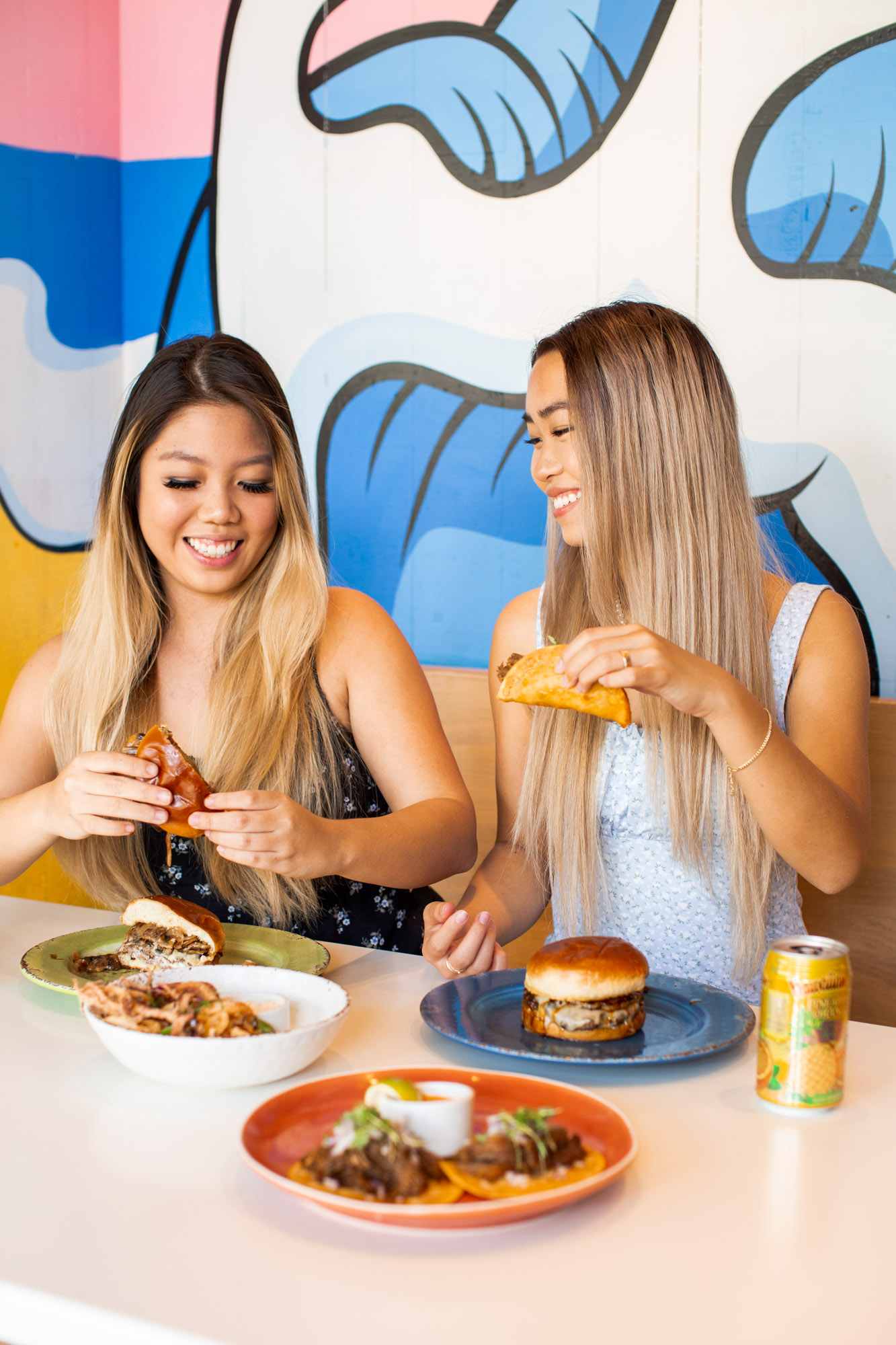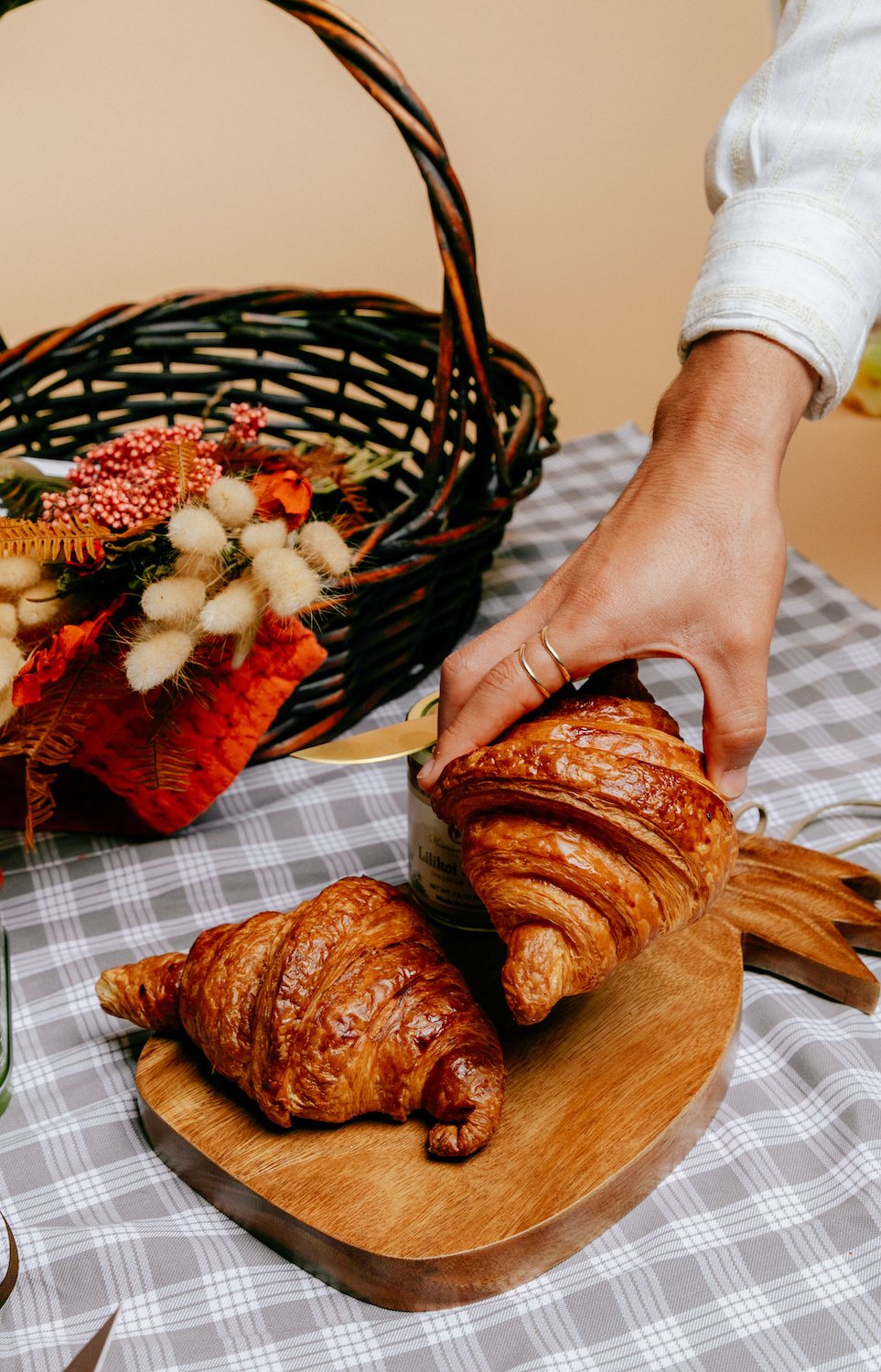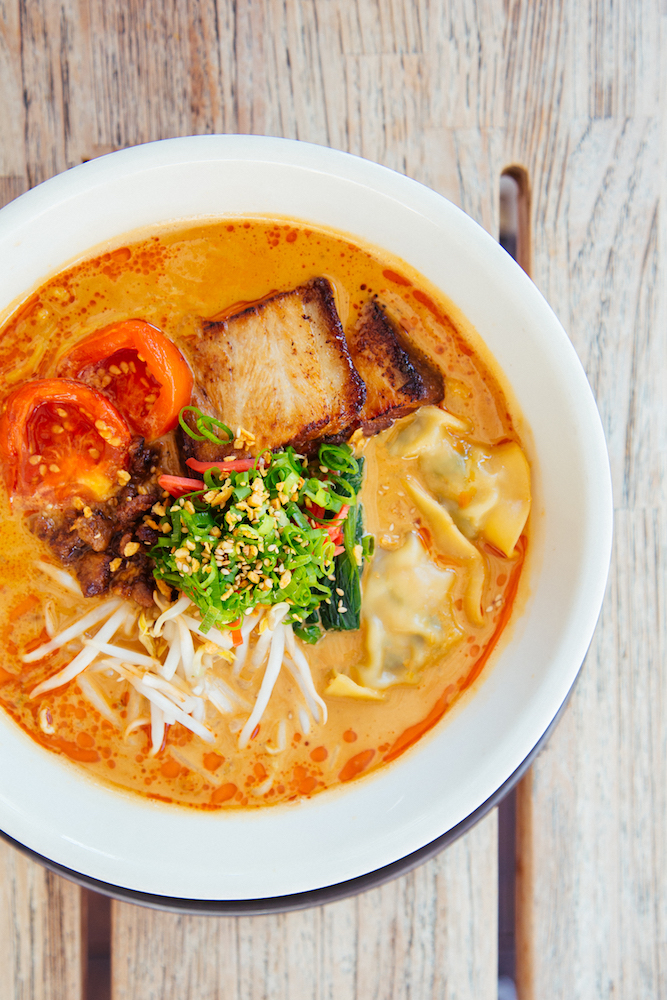
Oodles of Noodles

Through indelible soupy offerings, diners can discover a remarkable range of ramen dishes.
✏️ EUNICA ESCALANTE
📸SKYE YONAMINE
味を競い合う個性的なラーメン店の幅広いメニューを探訪。
Ramen is underrated. Decades of the instant stuff have left us disillusioned, haunted by late college nights when all there was were leathery noodles, watery broth, and strangely dehydrated toppings. We kept them in the back of cupboards, encased in cheap Styrofoam and ready to be microwaved (even if the warning labels told us not to!) when the fridge sat empty and our bank accounts begged us not to eat out anymore. In the western world’s collective consciousness, instant ramen was ramen.
But, ramen—real ramen—is far from instant. It is a labor of patience. Its individual components are ritually prepared hours, sometimes days, in advance, lovingly boiled, braised, or pressed to ease out its most dynamic flavors.
Just prior to a decade ago, authentic ramen could only be found in Japan. Even in Hawai‘i, where the Japanese are the second largest ethnic group, it was relegated to mom and pop shops or hole-in-the wall eateries known only through word-of-mouth. Then ramen hit the American mainstream in the early 2000s, a charge lead by Korean-American chef David Chang and his Momofuku ramen bar. In Hawai‘i, the movement was paralleled by local institutions like Goma Tei, which opened in 2006.
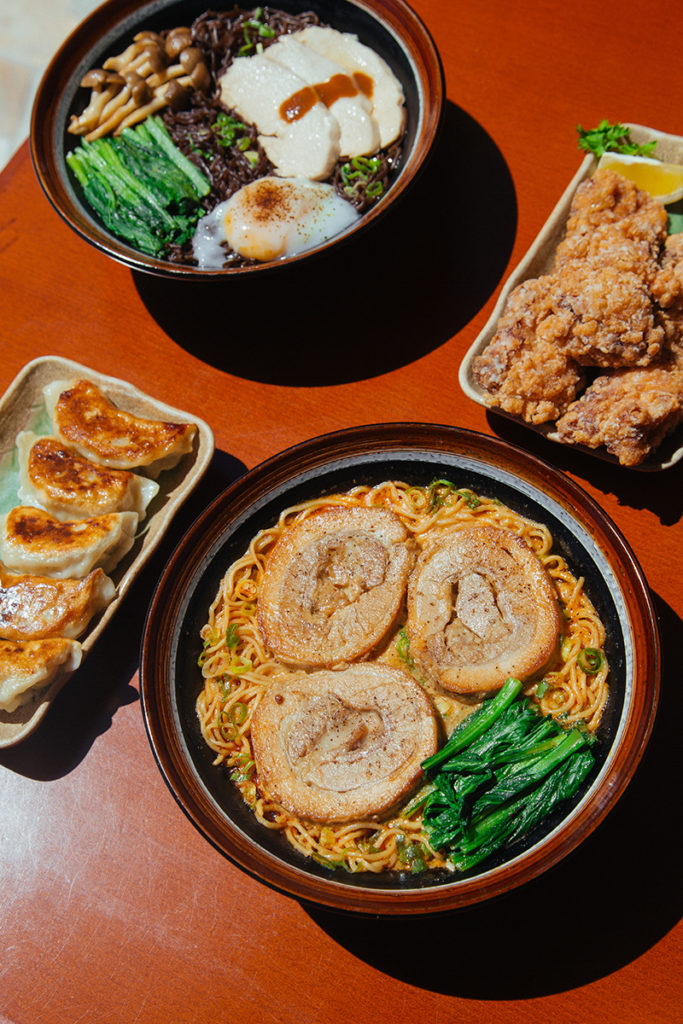
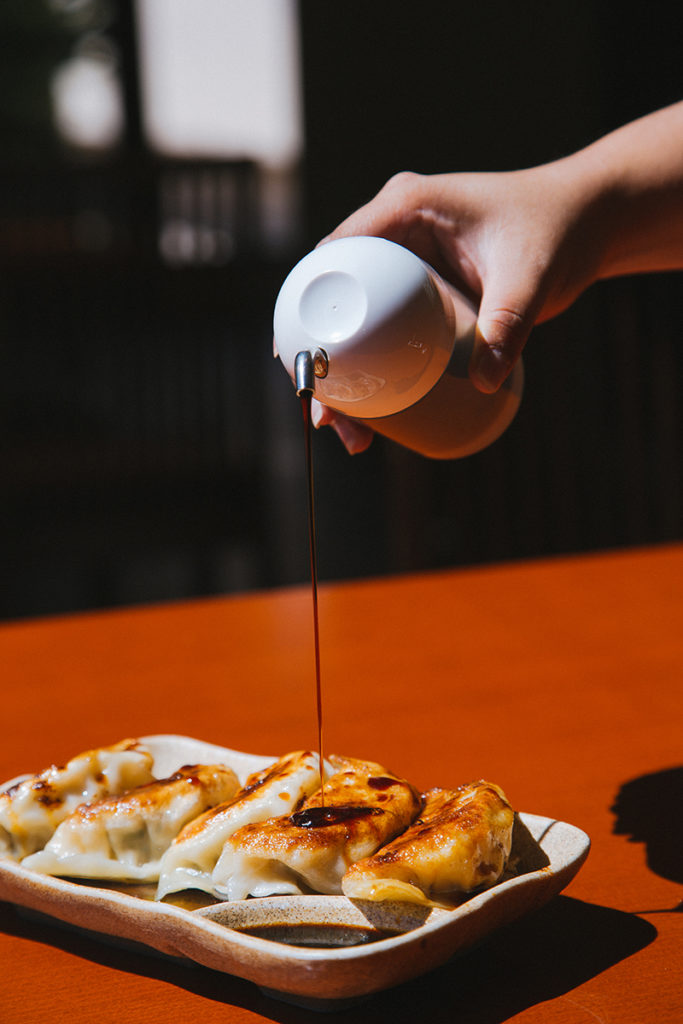
At Goma Tei, co-owner Kenneth Siu has made sure that every part of the process is as authentic as it can be. Almost every ingredient is either imported from Japan or inspired by techniques that Siu learned when he visited his friend, a traditional Japanese chef, in Nagoya. Their noodles are made fresh every day, pressed in-house at their Kahala Mall location with a noodle machine imported from Japan. Raw sesame, also brought from Japan, is roasted and stone ground then boiled with pork bone, chicken stewers, and vegetables over several hours to make the broth for their signature tan-tan ramen.
“Yes, food is subjective, but good food never lies,” Siu tells me over steaming bowls of ramen. One dish is Siu’s most recent creation: truffle ramen. A stickler for culinary perfection, it took Siu six months to perfect the recipe which includes infusing truffle powder directly into the noodles. As I slurp down the last of my ramen, I compliment Siu over the taste. He responds, “The authentic way is the one that lasts.”
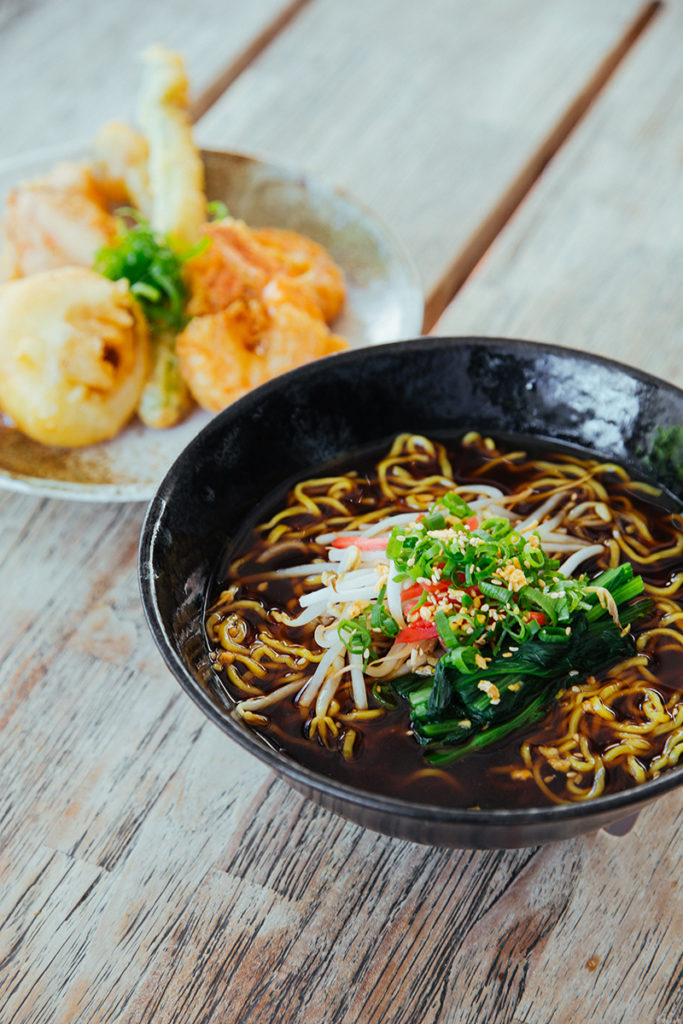
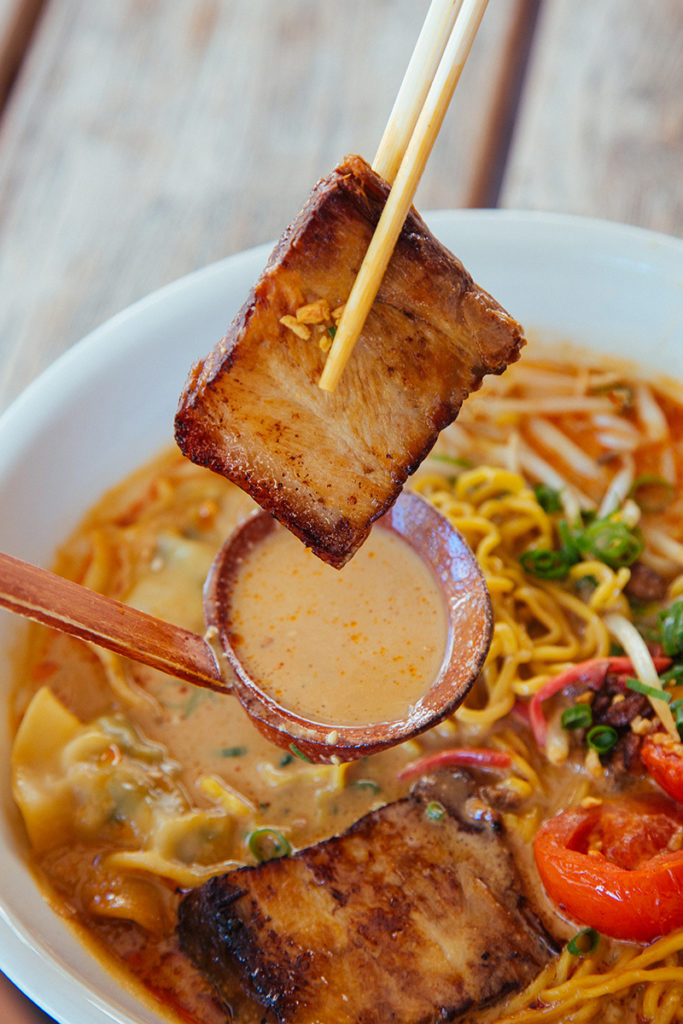
At Eating House 1849, my meal comes in the form of a dish so big that the server has to carry it with two hands. Since first opening its Kaua‘i location in 2016, chef Roy Yamaguchi’s latest restaurant has become an homage to Hawai‘i’s plantation days and the era’s cuisine. It would not have been uncommon for Japanese plantation workers to cook up a bowl after a long day in the field. In fact, the local favorite, saimin, has its roots in Japanese plantation cuisine where it combined with Chinese and Filipino noodle dishes.
Eating House’s take on ramen is more elevated than what would have been shared in communal meals at the plantation. Their spicy ramen has a creamy broth that is more pork than sesame, toeing away from the strong peanut buttery taste that is often associated with sesame-based ramen. The pork belly is braised to the point that it is almost delicate. When I scoop it into my mouth, it only rests on my tongue for a few seconds before it melts into tangy morsels. It’s a hearty dish that has full-bodied umami in every slurp.
In contrast, the tempura ramen is light. The broth has the faintest shoyu flavor, not so much that it overpowers the dish but enough to compliment its other components. The various tempura fixings go down with a crunch, a satisfying balance to the noodle’s tenderness. Despite the dishes’ yin and yang natures, they have a common bond in the freshness that lingers in every bite. As a local institution, Eating House sources a majority of its ingredients from local farmers, ranchers, and fishermen not only to support the local agricultural industry but to maximize each dish’s freshness.
“We like to use local ingredients because you can really taste the difference,” says Randy Bangloy, executive chef of Eating House’s Waikīkī location. “A dish is only as good as its ingredients.”
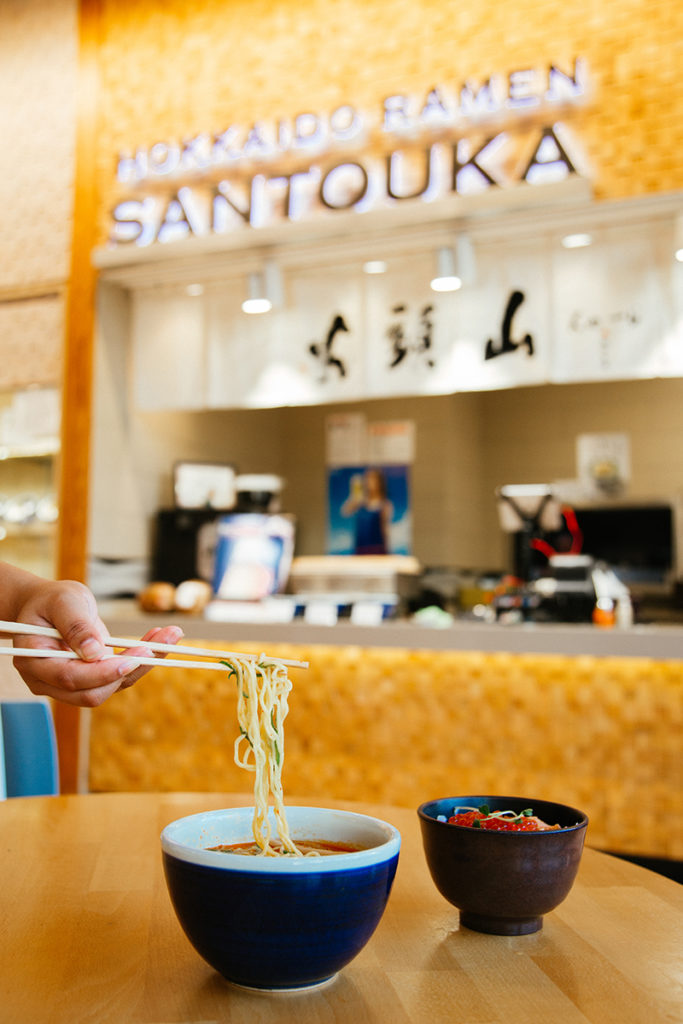

Journey past the row of shelves flaunting Mitsuwa Marketplace’s assortment of imported Japanese goodies and you’ll find Santouka Hokkaido Ramen. Tucked into the store’s back corner, the restaurant might look unassuming under bright fluorescent lights. But its selection of combination ramen and rice dishes is probably the closest iteration to what you’ll experience in the fast-paced streets of urban Japan. Santouka is a direct import from Japan and in its success has expanded to nine countries with 15 locations in the U.S. alone.
Although it is made for patrons who are on-the-go, it does not sacrifice any time or care in preparing filling yet tasteful bowls. Customers can choose from a wide range of ramen. From the shio ramen with its gentle flavor and mild salt taste to tokusen toroniku ramen (Santouka’s first and signature dish), there is a ramen for every discerning taste.
When all was said and done, there was nothing left for me to do but sit back in my chair and pat my stomach. My curiosity has been sated, my palate cleansed of any past impressions of what ramen is. The next time someone offers me microwaved, dehydrated noodles, I’ll have to ask: “Have you tried the real stuff?”






